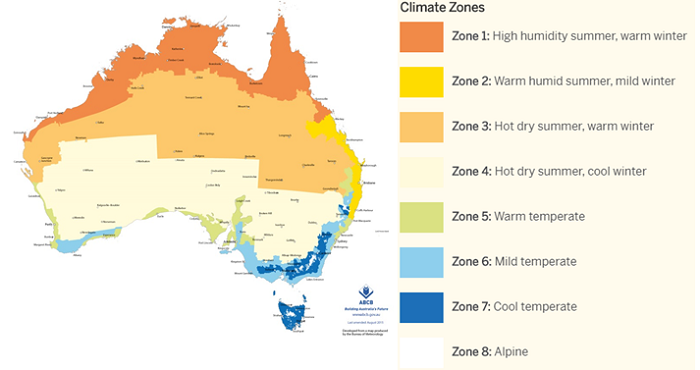When it comes to insulation, R-value is very important and should not be overlooked. R-value is the materials’ resistance to conductive heat flow. There are many factors that will help you determine which R-value you need for your home or commercial project. The higher the R-value, the better the thermal performance. It varies between different types of insulation, where you would have a higher R-value for roof insulation compared to wall insulation. You might come across the terms ‘Up’ and ‘Down’ R-values. Up R-values describe the resistance to heat flow upwards, which occurs during winter. ‘Down’ R-values describe the resistance to heat flow downwards, sometimes known as ‘summer’ R-values.
To understand how insulation works, it helps to be familiar with heat flow and its three basic mechanisms – conduction, convection, and radiation. According to Knauf Insulation, one of the leading companies that provide quality insulation, conduction is the ‘transmission of heat through a material, or from one material to another, through direct contact.’ An example of this is when a spoon is placed in a hot cup of tea and conducts heat through its handle to your hand.
Convention, on the other hand, occurs in gases and liquids. The heat becomes warmer and less dense, gradually rising. This is why heat rises in your home and the cooler air sinks towards the floor. Radiation is the transmission of infra-red radiant energy from a ‘hot’ surface to a ‘cold’ surface through air. Radiant heat travels in a straight line, which is why the sun’s heat waves travel through space until it hits an object and only then is there any effect.
Does climate effect the R-value?
As mention above, R-value has many different factors that contribute to its rating. The R-value depends on the type of insulation, the thickness, and the density of the product. Other factors in determining the R-value is temperature, aging, and its moisture accumulation. Depending on which type of insulation you need, whether that’s floor, wall, or ceiling insulation, the area in which you reside plays a major role in choosing the correct insulation.
In Australia we have varied weather from state to state. The insulation you would use in Hobart would greatly differ from the insulation you would use in Cairns. Depending on the region, the R-levels will either be higher or lower. If you are in a more tropical climate, the need for insulation lessens, as you don’t want to retain too much heat. If you’re in a cooler climate such as Melbourne, you’ll need something with a higher R-value to keep the heat in during the colder months.

| Minimum insulation level by climate — Cool temperate; Alpine Reducing heat loss is the main priority |
| Minimum insulation level (Total R-value) | ||
| Example locations | Roof/Ceiling | Wall |
| Melbourne, VIC | 4.1 | 2.8 |
| Canberra, ACT | 4.1 | 2.8 |
| Thredbo, NSW | 6.3 | 3.8 |
Regulations and rules
All materials for thermal insulation of buildings must meet the Australian Standard AS/NZS 4859.1, even if the materials have been imported. Always make sure to check and double check what you’re ordering if you are purchasing and installing insulation yourself. Insulation must also comply with the Building Code of Australia 2013 Version 2 Part 3.12, where it states that there are minimum requirements for the R-values of materials used. It also depends on the building type, whether it’s commercial or residential. It is always recommended to seek a professional opinion, so you know you are getting the correct insulation.
Insulation types and their applications
There are two main types of insulation; bulk and reflective insulation. Bulk insulation ‘mainly resists the transfer of conducted and convected heat, relying on pockets of trapped air within its structure’ (AusGov Your Home). Its thermal resistance is essentially the same regardless of the direction of heat flow through it. In comparison, reflective insulation mainly resists the radiant heat flow due to its high reflectivity and low emissivity, which is the ability to re-radiate heat).
You’ll find that bulk insulation materials will include glasswool, cellulose fibre, polyester, and polystyrene. Reflective insulation will primarily be shiny aluminium foil laminated onto paper or plastic. Sometimes you will even find a combination of the two.
When looking for insulation for your home or commercial project, it’s always great to get a quote from a reputable insulation supplier. They will be able to give you a quote based on your energy report and housing plans to work out which option is best for you.
If you still have any questions about choosing the appropriate R-value insulation, don’t hesitate to give us a call and we’ll be happy to help you with your needs.



